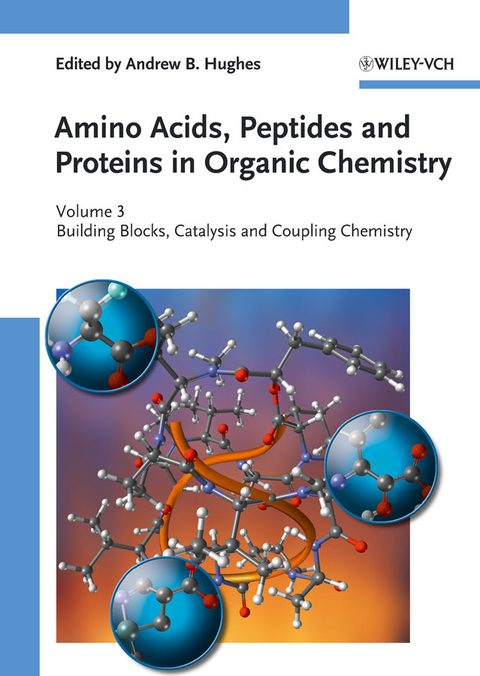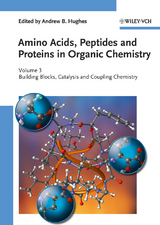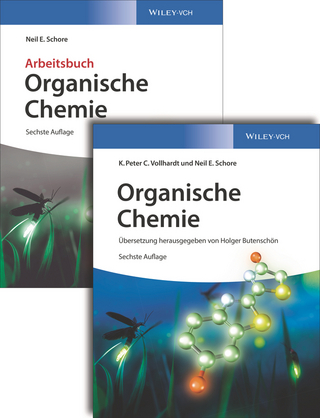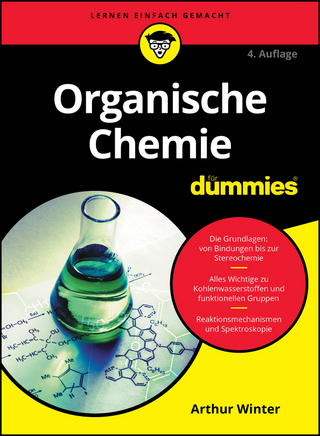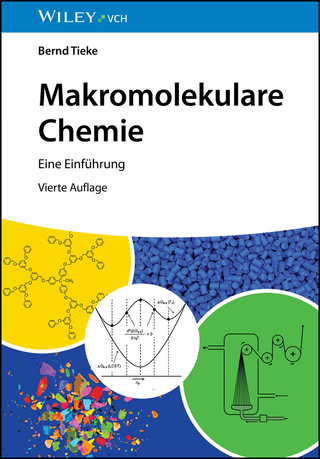Amino Acids, Peptides and Proteins in Organic Chemistry
Wiley-VCH (Verlag)
978-3-527-32102-5 (ISBN)
- Titel ist leider vergriffen;
keine Neuauflage - Artikel merken
.
Diese praxisbezogene Reihe stützt sich auf Wissen und Erfahrungen der weltweit bedeutendsten Aminosäure-Forscher. Mit ihrer ausführlichen Diskussion von Vorkommen, Nutzen und Anwendungsbeispielen von Aminosäuren und ihren Polymeren (Peptiden und Proteinen) schließt sie eine Lücke in der Literatur.
Andrew Hughes is a reader and Head of the Department of Chemistry, La Trobe University, Melbourne, Australia. He obtained his degrees from the University of Western Australia before taking up post-doctoral appointments at the University of Cambridge starting 1989. After three years working with Professor Andrew Holmes, he joined Professor Steven Ley´s group. While at Cambridge he was appointed the Shell Research Fellow at Robinson College. His interests lie in the general field of asymmetric synthesis and methodology, with a recent focus on amino acid chemistry.
PART I: Amino Acids as Building Blocks
AMINO ACID BIOSYNTHESIS
Introduction
Glutamate and Glutamine: Gateways to Amino Acid Bioynthesis
Other Amino Acids from Ubiquitous Metabolites: Pyridoxal Phosphate-Dependent Routes to Aspartate, Alanine, and Glycine
Routes to Functionalized Three-Carbon Amino Acids: Serine, Cysteine, and Selenocysteine
Other Amino Acids fron Aspartate and Glutamate: Asparagine and Side Chain Functional Group Manipulation
Aspartate and Glutamate Families of Amino Acids
Biosynthesis of Aliphatic Amino Acids with Modified Carbon Skeletons: Branched-Chain Amino Acids, Lysine, and Pyrrolysine
Biosynthesis of the Aromatic Amino Acids
Conclusions
HETEROCYCLES FROM AMINO ACIDS
Introduction
Heterocycles Generated by Intramolecular Cyclizations
Heterocycles Generated by Intermolecular Cyclizations
Heterocycles Generated by Cycloadditions
Conclusions
Experimental Procedures
RADICAL-MEDIATED SYNTHESIS OF ALPHA-AMINO ACIDS AND PEPTIDES
Introduction
Free Radical Reactions
Radical Addition to Imine Derivatives
Radical Conjugate Addition
Conclusions
Experimental Protocols
SYNTHESIS OF BETA-LACTAMS (CEPHALOSPORINS) BY BIOCONVERSION
Introduction
Biosynthetic Pathways of Cephalosporins and Penicillins
Production of 7-ACA by A. chrysogenum
Production of 7-ADCA by A. chrysogenum
Production of Penicillin G by A. chrysogenum
Production of Cephalosporins by P. chrysogenum
Conversion of Penicillin G and other Penicillins to DAOG by Streptomyces clavuligerus
Conclusions
STRUCTURE AND REACTIVITY OF BETA-LACTAMS
Introduction
Structure
Reactivity
Hydrolysis
Aminolysis
Epimerization
PART II: Amino Acid Coupling Chemistry
SOLUTION-PHASE PEPTIDE SYNTHESIS
Principle of Peptide Synthesis
Protection Procedures
Chain Elongation Procedures
Final Deprotection Methods
SOLID-PHASE PEPTIDE SYNTHESIS: HISTORICAL ASPECTS
Introduction
Selection of Compatible Synthetic Components
Racemization and Stepwise Peptide Assembly
Optimization of Synthetic Components
Foreshadowing of the Nobel Prize
Automation of SPPS
Impact of New Protecting Groups and Resin Linkages
Solid-Phase Organic Chemistry
Early Applications of SPPS to Small Proteins
Side-Reactions and Sequence-Dependent Problems
Rapid Expansion of Usage Leading to the Nobel Prize
From the Nobel Prize Forward to Combinatorial Chemistry
Protein Synthesis and Peptide Ligation
Conclusions
LINKERS FOR SOLID-PHASE PEPTIDE SYNTHESIS
Introduction
Immobilization via Carboxyl Group
Imobilization via Amino Group
Backbone Immobilization
Immobilization via Amino Acid Side-Chain
Conclusions
ORTHOGONAL PROTECTING GROUPS AND SIDE-REACTIONS IN Fmoc/tBu SOLID-PHASE PEPTIDE SYNTHESIS
Orthogonal Protecting Groups in Fmoc/tBu Solid-Phase Peptide Synthesis
Side-Reactions in Fmoc/tBu Solid-Phase Peptide Synthesis
Fmoc METHODOLOGY: CLEAVAGE FROM THE RESIN AND FINAL DEPROTECTION
Introduction
"Low" TFA-Labile Resins
"High" TFA-Labile Resins
Final Remarks
STRATEGY IN SOLID-PHASE PEPTIDE SYNTHESIS
Synthetic Strategies Utilizing Solid-Phase Peptide Synthesis Methods
Solid Support: Resins and Linkers
Developing the Synthetic Strategy: Selection of the Protecting Group Scheme
Resin Loading
SBS Peptide Chain Elongation: Coupling and Activation
Piperazine Formation
Solid-Phase Synthesis of Protected Peptide Segments
Fragment Condensation Approach: Convergent and Hybrid Synteses
Cleavage from the Resin and Global Peptide Deprotection
Disulfide Bond-Containing Peptides
Native Chemical Ligation (NCL)
SPPS of Peptides Modified at their C-Terminus
Side-Chain-Modified Peptides
Cyclic Peptides
Large-Scale Solid-Phase Synthesis
Conclusions
PEPTIDE-COUPLING REAGENTS
Introduction
Carbodiimides
Phosphonium Salts
Aminium/Uronium Salts
Fluoroformamidinium Coupling Reagents
Organophosphorus Reagents
Triazine Coupling Reagents
Mukaiyama's Reagent
Conclusions
CHEMOSELECTIVE PEPTIDE LIGATION: A PRIVILEGED TOOL FOR PROTEIN SYNTHESIS
Introduction
Chemoselective Peptide Ligations Following a Capture/Rearrangement Strategy
Chemical Transformations for Cys-Free Ligations in Peptides and Proteins
Other Chemoselective Capture Strategies
Peptide Ligations by Chemoselective Amide-Bond-Forming Reactions
Strategies for the Ligation of Multiple Fragments
AUTOMATION OF PEPTIDE SYNTHESIS
Introduction
SPPS: From Mechanization to Automation
Deprotection Step: Monitoring and Control
Coupling Step: Monitoring and Control
Integrated Deprotection and Coupling Control
PEPTIDE PURIFICATION BY REVERSED-PHASE CHROMATOGRAPHY
RP-HPLC of Peptides
Peptide Properties
Chromatographic Principles
Prediction of Peptide Retention Times
Advantages of Reduced Scale
Two-Dimensional Chromatographic Methods
Peptide Analysis in Complex Biological Matrices
Standard Methods for Peptide Separations for Analysis by Hyphenated Techniques
Emerging Methods for Peptide Separations for Analysis by Hyphenated Techniques
Practical Use of RP-HPLC for Purifying Peptides (Analytical and Preparative Scale)
DIFFICULT PEPTIDES
Importance of Peptide Synthesis
Methods for Peptide Synthesis
Chemical Peptide Synthesis
"Difficult Peptide Sequences"
Means to Overcome Peptide Aggregation in SPPS
Monitoring the Synthesis of a "Difficult Peptide"
Conclusions
| Erscheint lt. Verlag | 15.12.2010 |
|---|---|
| Reihe/Serie | Amino Acids, Peptides and Proteins in Organic Chemistry ; 3 | Amino Acids, Peptides and Proteins in Organic Chemistry ; 3 |
| Mitarbeit |
Herausgeber (Serie): Andrew B. Hughes |
| Sprache | englisch |
| Maße | 170 x 240 mm |
| Gewicht | 1275 g |
| Themenwelt | Naturwissenschaften ► Chemie ► Organische Chemie |
| Schlagworte | Aminosäuren • Biochemie • Biochemie u. Chemische Biologie • Biochemistry (Chemical Biology) • Chemie • Chemistry • Methods - Synthesis & Techniques • Methods - Synthesis & Techniques • Organische Chemie • Organische Chemie / Methoden, Synthesen, Verfahren • Peptide • Pharmaceutical & Medicinal Chemistry • Pharmaceutical & Medicinal Chemistry • Pharmazeutische u. Medizinische Chemie • Protein • Proteine • Protein / Eiweiß |
| ISBN-10 | 3-527-32102-0 / 3527321020 |
| ISBN-13 | 978-3-527-32102-5 / 9783527321025 |
| Zustand | Neuware |
| Informationen gemäß Produktsicherheitsverordnung (GPSR) | |
| Haben Sie eine Frage zum Produkt? |
aus dem Bereich
